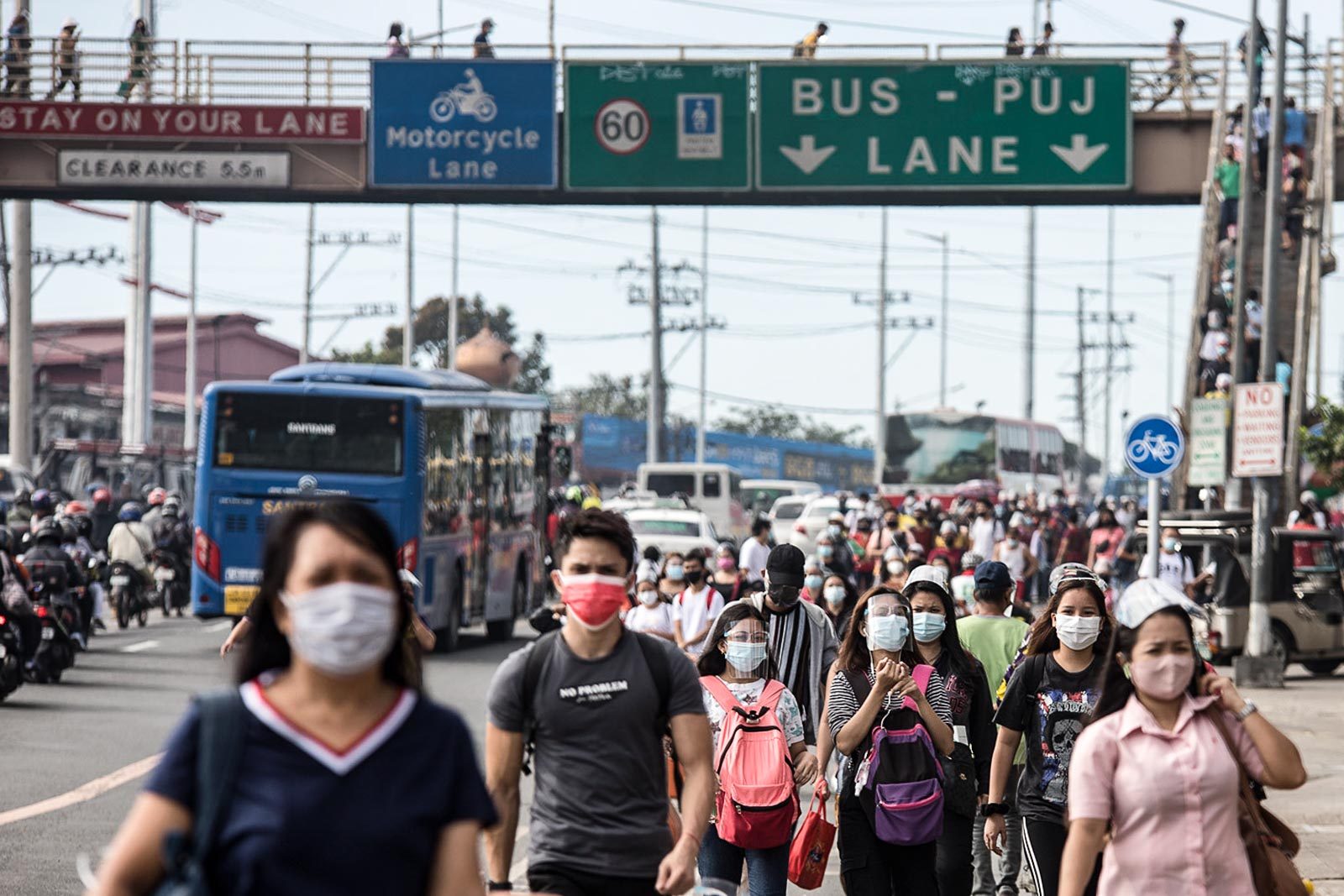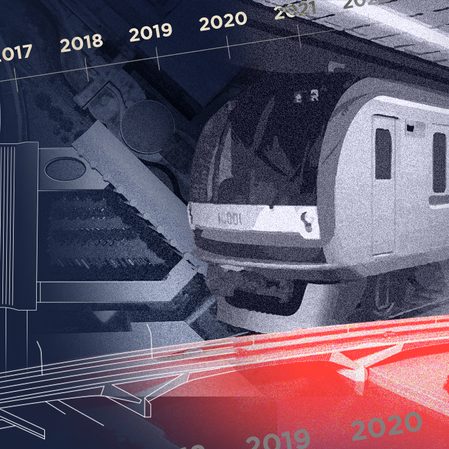SUMMARY
This is AI generated summarization, which may have errors. For context, always refer to the full article.

This is a press release from Move as One Coalition.
The Philippines is plagued by a system-wide public transport shortage that has been made worse by the pandemic.
More than 70% of Filipino workers who cannot work from home have found it harder to get to work since the COVID-19 crisis began. This shortage has raised costs for commuters in the past year as road transport prices have shot up by nearly 20%.
Jeepney drivers, already hard-pressed to make ends meet after the government suspended their operations last year, were harmed by the checkpoints and then denied nearly P4 billion in service contracting funds they fought for, as President Duterte failed to extend Bayanihan 2 beyond June 30. The expiration of service contracting funds is making COVID-19 worse as commuters are forced to crowd into even fewer public transport trips.
Car-centric public budgeting
Car-centric public budgeting is one of the reasons behind this system-wide transport shortage.
From 2010 to 2021, 99% of the P2.8-trillion road-based infrastructure budget went to road construction, widening, and maintenance. Only 1%–or P40 billion–of the road-based infrastructure budget went to road-based public transportation.
Car-centric public budgeting has harmed not just commuters, but car users too. In Metro Manila’s major roads, public transport trips collapsed by 14% from 2012 to 2019 as more users shifted to private cars and motorcycles. Average vehicle trips ended up taking 40% longer as congestion worsened.
The P2-trillion infrastructure flagship project pipeline will not be enough to meet the country’s mobility demand through 2030 because it focuses too much on rail and budgets very little for road-based public transport.
A big chunk—98%—of the P2-trillion pipeline is for rail, and just 2%, or P49 billion, is for road-based public transport. Rail is good for long-term needs, but we are facing a massive shortage in public transport supply now. Road-based public transport infrastructure can be built quicker.
Budget for road-based public transportation
We need “a better balance for a better normal.” We propose a P150-billion budget for road-based public transportation that should be funded starting with Bayanihan 3 and the 2022 budget.
To address traffic congestion and our climate crisis, we need to shift people from their cars into walking, cycling, and public transport. We should build more safe and accessible pathways for cyclists and pedestrians. We should build on the momentum from the construction of the bike lane networks in Metro Manila, Cebu, and Davao, worth P1 billion under Bayanihan 2.
Much more can be done with a higher budget. We should fund better service contracts and equity support for transport workers and expand the number of buses, jeeps, and other road-based public transport modes.
Our Coalition Co-Convenor Robert Y. Siy, Jr., writes, “What is urgently required is balanced support to road-based public transport, the mainstay of the public transport system, which has been starved for support in recent years.” He also identifies mobility priorities in the less than 12 months left in the Duterte administration.
Our proposed budget was crafted through a long process of deliberation and consensus-building with health care workers, cyclists, transport workers unions, labor unions, commuters’ rights advocates, climate justice advocates, faith-based groups, student groups, and persons with disabilities. These are people from all walks of life, with each one deserving of a dignified commuting experience and adequate public transport service quality.
#CommutersNaman
There is money available at the national and local level for these critical public transport investments.
In fact, the Tax Reform for Acceleration and Inclusion Act of 2017 requires 70 percent of its incremental tax revenues for “infrastructure programs to address congestion through mass transport”. From 1997 to 2018, the national government collected P2.1 trillion in revenues from road-based transport sources like motor vehicles and oil. There was around P510 billion in end-balances of local government funds in 2019.
Our research puts our budget proposal in the proper historical perspective: Our proposed P150-billion budget is a much more efficient, equitable, and effective use of taxpayer money to address this system-wide transport shortage. This budget is small, but will be more effective than the P2.8 trillion car-centric road infrastructure budget from 2010 to 2021. Our proposed budget will correct the lopsided P2 trillion infrastructure flagship project pipeline that focuses too much on long-term rail. Our proposed budget will help the Philippines recover from the pandemic sooner as it makes transport safer for commuters and transport workers.
As Congress debates on our budget, let us ask: What country do we want to build? A country just for the rich few who own cars? Or a country for all Filipinos from all walks of life, who walk, cycle, and use public transport?
Let us work together for a better balance for a better normal.
Let us work together to pass a budget that our people deserve.
#CommutersNaman – Rappler.com
Add a comment
How does this make you feel?

There are no comments yet. Add your comment to start the conversation.